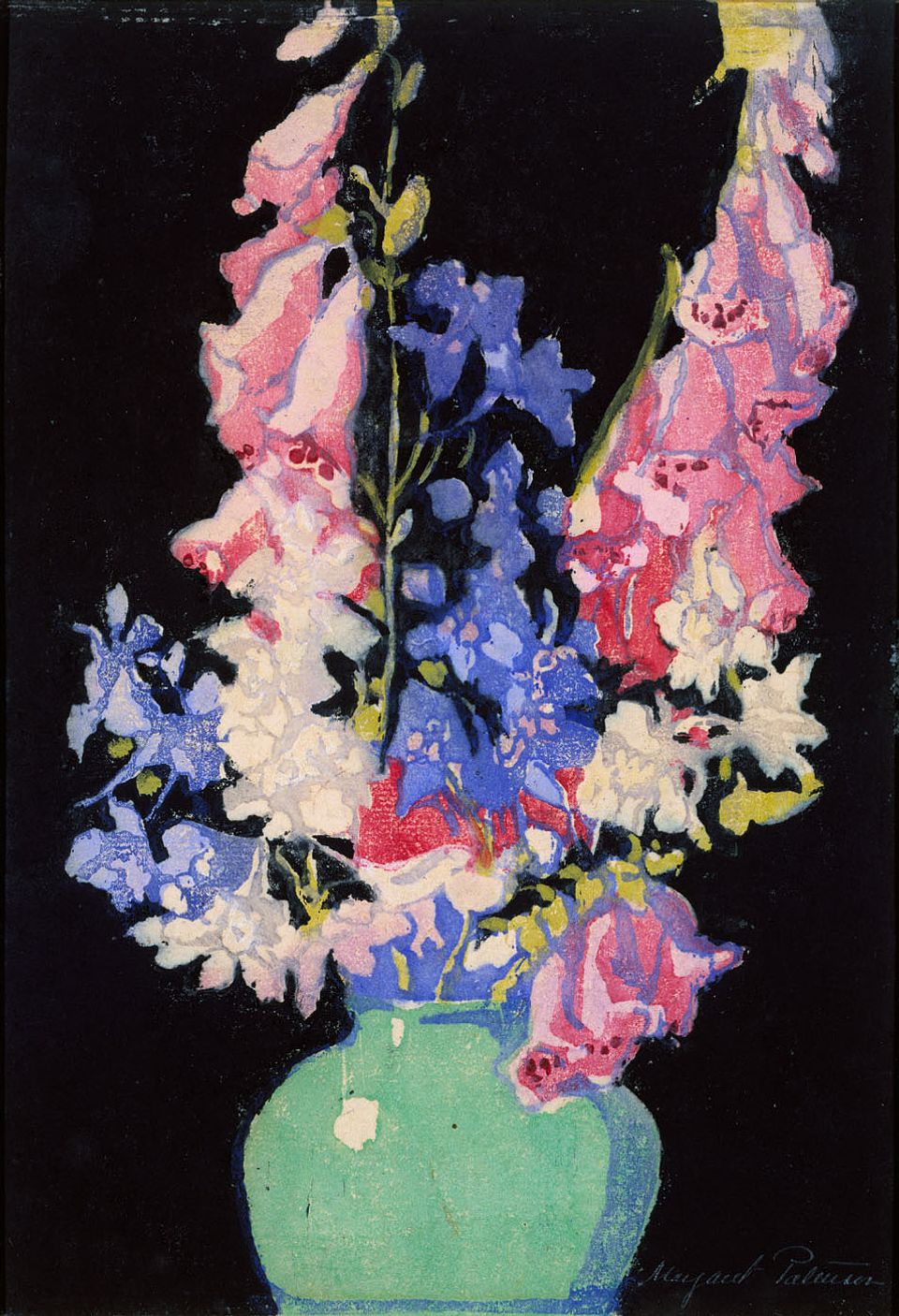
This post is part of an ongoing series on Eye Level: Q and Art, where American Art's Research department brings you interesting questions and answers about art and artists from our archive. If you enjoy this post, take a look at others in our series.
Q: I love the bright flower prints by Margaret Jordan Patterson. Can you tell me more about the artist?
Answer: The Boston artist Margaret Jordan Patterson exhibited her paintings and prints throughout the United States and in France during her lifetime, and her name was frequently mentioned in art reviews and announcements. Today, Patterson is not well-known outside of New England, but occasional exhibitions have brought attention to her work.
The daughter and granddaughter of sea captains, Margaret Patterson was born in 1867 at the Marine Hotel in Soerabaija on the island of Java. Her parents, Alfred Patterson and Sarah Frances were in the middle of a voyage at the time of her birth. Patterson grew up in Maine and Boston, and her earliest art training came through a correspondence course. In 1895 she attended Pratt Institute in New York. Although Patterson attended art classes at Pratt for a year, it was through her personal associations with artists such as Arthur Wesley Dow and Charles H. Woodbury that she learned the principles that most influenced her art. Dow and Woodbury were enthusiastic teachers who were eager to share their theories on art. From Dow's lessons, Patterson developed her sense of composition, the placement of items within a scene, and Patterson's energetic brushwork may have been influenced by Woodbury's teachings.
After returning to Boston, Patterson taught art in the public schools. Several years later she took a position as the head of the art department at the preparatory school for girls, Dana Hall, in Wellesley, Massachusetts. She continued in this job until her retirement in 1940. While teaching, Patterson continued to create art and participate in the Boston art community. Beginning in 1899, Patterson took summer trips to Europe where she made many sketches and found inspiration for the finished paintings and prints she made the rest of the year. Her travels took her to various places in Europe: France, Belgium, Holland, Spain and Italy. Art critics commented on a surge of color in her work after she returned from Spain. It was while on a summer trip in Paris that Patterson learned to make color prints. Her teacher was most likely Ethel Mars an artist from Illinois who had been living in Paris. During World War I, Patterson stayed closer to home, visiting and painting in Cape Cod and the New England countryside.
Patterson's paintings and prints often represented landscapes she had seen during her travels. However, during the 1920s she began to focus more on floral subjects for her color prints. One of her early flower prints was a water lily floating on a pond, but more often flowers were shown in a vase with a background in a contrasting color. After a lifetime of travel, flowers might seem like a limiting subject, but that was not the case for Patterson who saw endless possibilities in the variety of shapes and colors. The flower prints were an opportunity to apply and expand the skills she had accumulated through a life in art.
Patterson was not the only artist in the American Art Museum's collection to create beautiful bouquets. Get ready for spring by taking a virtual walk through the flowers in our collection.


















